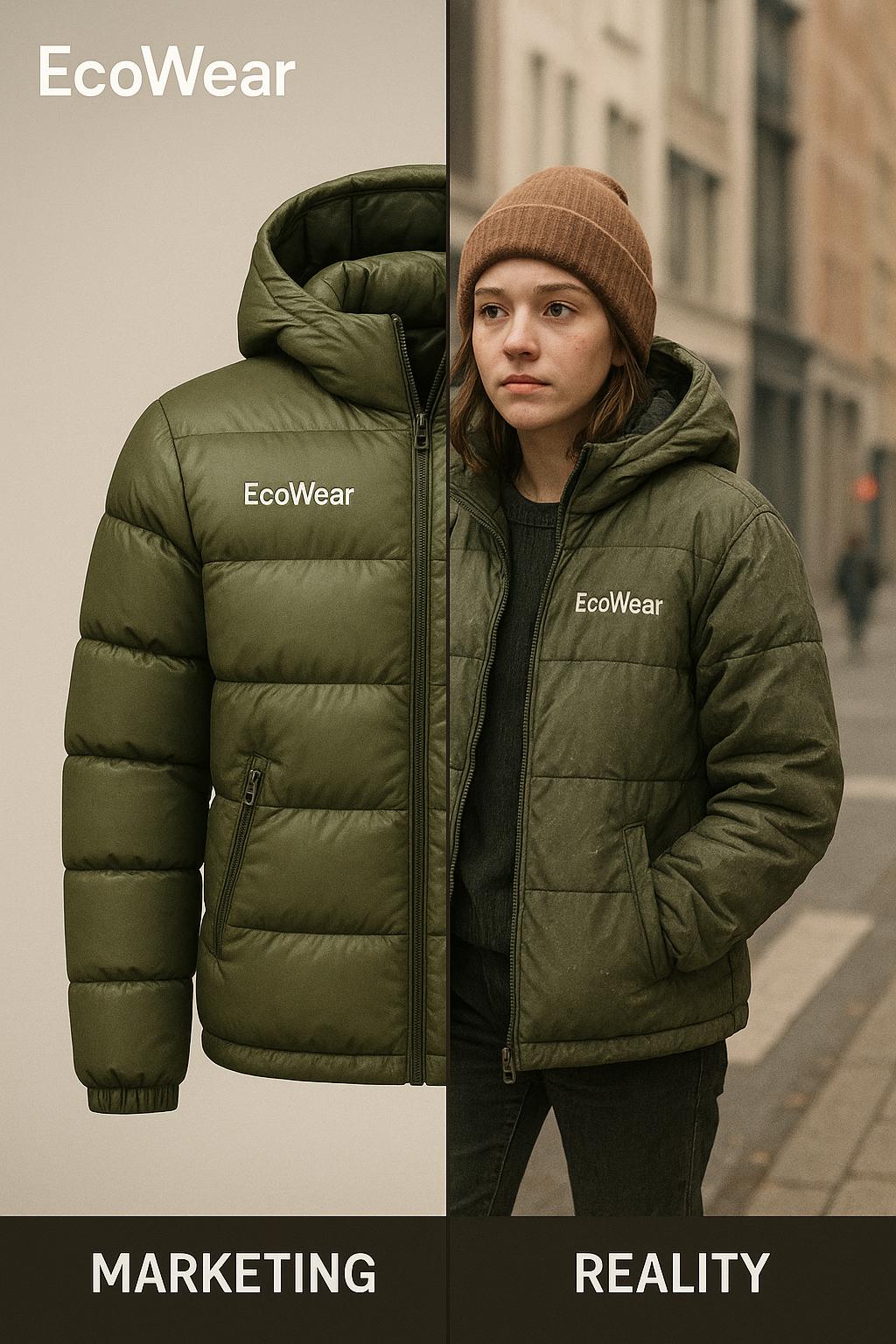Marketing advice can quickly start to sound the same: “know your audience,” “be authentic,” “post on social.” Useful, but not exactly inspiring.
That’s why in this article, we’re taking a different approach.
Instead of abstract tips, we’ve created eight imaginative example companies and explored the creative ways they might market themselves. For each one, we describe what they did, what worked well, where the challenges are, and the pros and cons of the idea.
You’ll also find a step-by-step guide that shows how you could try something similar in your own company.
Great company marketing ideas do not require a giant budget. They require sharp observation, a steady process, and a few creative bets that can scale.
Company Marketing Ideas: A Practical Framework
Before moving to our examples, it helps to sort ideas by intent. This is a simple, repeatable framework:
- Give Value Early: surprise micro-gifts, quick wins, and helpful checklists.
- Build Utility: interactive calculators, templates, and mini-apps.
- Invite Participation: community co-creation, subculture collaborations, and challenges.
- Show Your Work: data storytelling and transparent post-mortems.
A quick comparison looks like this:
| Idea Type | Typical Cost | Complexity | Time to Impact | Best For |
|---|---|---|---|---|
| Micro-gifts | Low | Low | Fast | Trials, referrals |
| Interactive tools | Medium | Medium | Medium | Lead gen, SEO |
| Data storytelling | Medium | Medium | Medium | PR, authority |
| Challenges | Low | Medium | Fast | Social reach, retention |
| Transparency posts | Low | Low | Medium | Trust, hiring |
Now, check out our examples and practical tips.
1. Surprise Micro-Gifts
Small, unexpected gestures create warmth and reciprocity.
A free upgrade, a handwritten note, or a store credit feels personal and memorable. Because it defies expectations, it gets talked about and screenshotted.
Psychologists call this the reciprocity principle. In practice, micro-gifts work best when tied to a clear behavior like hitting a usage milestone or referring a friend. They are affordable, repeatable, and easy to automate.
Pros:
- Quick to launch and test at tiny scale.
- Easy to personalize.
- Strong lift on trial-to-paid and customer retention.
Cons:
- Can be gamed if rules are vague.
- Diminishes if overused.
Example: CraftyCoffee – small artisanal coffee subscription
CraftyCoffee quietly sent new subscribers a limited-edition sample after their third delivery. Customers posted photos, tagged the brand, and wrote short tasting notes. Churn dropped in cohort analysis, and referrals rose without any extra ad spend.
What to Do
- Pick one moment to reward: third purchase, first referral, or a weekly usage streak.
- Choose simple gifts that ship fast: credits, samples, or upgrades.
- Set clear rules to prevent abuse and document edge cases.
- Track the effect on conversion, retention, and referral rate.
2. Interactive Tools Instead of Ads
Calculators, graders, and planning templates outperform passive ads because they solve real problems.
They engage audiences and consistently increase website traffic through organic search.
Think ROI calculators, audit checkers, or a simple quiz that recommends the right plan.
According to Think with Google research on micro-moments, people act when help arrives in the exact moment of need. Useful tools meet users there and win attention without shouting.
If resources are tight, consider AI in social media content creation to turn tool insights into posts quickly.
Pros:
- Compounding SEO value and strong email capture.
- Clear, trackable utility.
- Reusable across campaigns.
Cons:
- Requires maintenance and occasional UX polishing.
- Can underperform if the problem is too broad.
Example: FinTrack – personal budgeting app
FinTrack built a “Debt-Free Date” calculator that estimated when users could pay off loans with different strategies. Organic traffic grew steadily, and the calculator became the highest-assisted-conversion asset within three months.
What to Do
- List top five user questions that require math or classification.
- Ship a minimal version in two weeks with clean inputs and helpful defaults.
- Gate only the output summary, not the entire tool.
- Add UTM-tagged share links for instant distribution.
3. Reverse Campaigns
A reverse campaign flips an industry norm.
It might remove a popular feature for a week, publish unedited product photos, or offer a limited run at zero markup to spark a conversation about fair pricing.
This idea earns coverage because it critiques the default approach in a competitive market. It signals confidence and a point of view.

However, it needs tight scoping, clear messaging, and a fast feedback plan.
Pros:
- High talk value and low media spend.
- Memorable stance that clarifies positioning.
- Useful for growth marketing spikes.
Cons:
- Can confuse customers if poorly timed.
- Requires careful support scripting for frontline teams.
Example: EcoWear – sustainable outdoor apparel
EcoWear paused all glossy product images for a week and presented real customer repair photos. The move highlighted durability and the repair program. Press covered the story, and newsletter sign-ups rose sharply during the campaign window.
What to Do
- Choose one norm to reverse and time-box it.
- Draft a short manifesto post to explain the why.
- Train support on FAQs and prepare a warm reversion plan.
- Measure earned mentions, branded search, and assisted conversions.
4. Data Storytelling
Buyers trust specific, relevant insight. Aggregate product or survey data, anonymize it, and turn it into a simple story with one clear chart.
Done well, data storytelling earns links, fuels sales enablement, and strengthens domain authority.
For design choices, keep charts minimal and labeled. The goal is clarity, not decoration.
Also, explore how AI can help transform datasets into outlines, captions, and social snippets.
Pros:
- Grows credibility and search reach.
- Multipurpose content for PR and sales.
- Useful for content marketing roadmaps.
Cons:
- Requires data hygiene and legal review.
- Easy to overcomplicate if scope creeps.
Example: HealthMetrics – workplace wellness platform
HealthMetrics published quarterly “movement minutes” trends across industries. HR leaders referenced the report in budget meetings, and partner sites linked to the charts. The report became a cornerstone asset for mid-market outreach.
What to Do
- Inventory safe-to-share data fields and set anonymization rules.
- Pick one question executives ask and answer it with a single core chart.
- Write a crisp narrative and a press-friendly summary.
- Offer the dataset download to attract citations.
5. Community Co-Creation
Invite communities to shape product playlists, editorial collections, or event topics. Then credit them prominently.
The act of co-creating builds identity and spreads word-of-mouth.
Set up seasonal themes and rituals so the community knows when and how to join. Track submissions, feature highlights, and give contributors small perks. Pick a few social media marketing KPIs and automation tools to keep the program sustainable.
Pros:
- Deepens loyalty and repeat usage.
- Generates authentic UGC.
- Helps teams hear the voice of the customer.
Cons:
- Needs community moderation.
- Benefits can be slow without consistent prompts.
Example: Bookify – online book discovery platform
Bookify invited members to co-curate “10-page wins,” short passages that changed how they worked. The series turned into weekly emails and a rotating home-page carousel. Members felt seen, and referrals increased.
What to Do
- Define a clear theme and contribution format.
- Create a simple submission flow and a public leaderboard.
- Reward participation with credits, badges, or early access.
- Publish a monthly roundup across channels.
6. Subculture Collaborations
Focus on a niche scene. Partner with respected creators inside micro-communities, not just high-follower influencers. Co-design limited drops, tutorials, or events.
Start by listening. Join forums, attend meetups, and ask thoughtful questions. Also, invest in inclusive language and visuals.
Pros:
- High credibility inside hard-to-reach circles.
- Rich creative assets for future campaigns.
- Clear differentiation from mass-market rivals.
Cons:
- Smaller reach than mainstream influencers.
- Longer trust-building timeline.
Example: SkateTech – tech-enabled skateboarding gear
SkateTech co-designed a tutorial series with a local DIY skate collective. The content featured real spots and honest gear talk. Sales in core cities rose, and the brand earned a trusted voice within the scene.
What to Do
- Map subcultures aligned with brand values and product fit.
- Co-create assets with revenue sharing and editorial trust.
- Set content formats and posting cadence upfront.
- Track save rate, comment quality, and city-level sales.
7. Challenge-Based Campaigns
Challenges add stakes and create habit loops.
A simple rule, a public scoreboard, and small rewards can drive repeat usage. Behavior science shows that motivation rises when action is easy and timely.
Keep mechanics simple and the time window short. Add social sharing, stickers, or badges for participants who finish. Finally, verify that calls to action are clear.
Pros:
- Strong engagement and shareability.
- Useful for onboarding sequences.
- Measurable uplift in daily active usage.
Cons:
- Fatigue sets in if challenges run too long.
- Requires moderation to prevent spam.
Example: FitTrack – fitness tracking app
FitTrack launched a 14-day “2000 steps before 10 a.m.” challenge. The rule was simple and social by design. Completions lifted weekly retention, and participants created a steady stream of UGC.
What to Do
- Choose one clear metric and a short time frame.
- Provide easy templates for sharing progress.
- Offer small perks at milestones and a grand prize at the end.
- Publish a recap reel and email highlights.
8. Transparent Failures
To be a bit cliché, let’s remind ourselves that honesty really is the best policy.
When teams publish what did not work and why, audiences lean in. Honesty and competence drive trust, which affects purchase intent.
Choose low-risk pilots and run consistent post-mortems.
Then extract three lessons and share them in plain language.
Do not blame. Do not exaggerate. Focus on what changed next.
Pros:
- Earns trust and inbound talent.
- Reduces repeated mistakes across teams.
- Improves decision quality.
Cons:
- Requires legal review and clear red lines.
- Can look performative if framed poorly.
Example: SnackBox – subscription snack delivery service
SnackBox documented a failed seasonal box theme. They described assumptions, the test design, and the changes they made. Subscribers appreciated the openness, and churn stabilized after the post.
What to Do
- Agree on a public post-mortem template and approval path.
- Share small bets first and expand as comfort grows.
- Highlight the fix, not just the failure.
- Revisit the outcome 60 days later.
Final Thoughts
The company marketing ideas we share here are practical, testable, and friendly to small teams.
- Give value before asking for anything. Small signals of generosity can drive trust.
- Build useful assets instead of more ads. Tools and templates keep paying back.
- Invite participation. Co-creation and challenges create stickiness and stories.
- Tell data-driven stories. Insight beats opinion, especially in B2B buying.
- Share what did not work. Transparency raises credibility.
If you want help turning these ideas into reality, try Stryng. It helps teams ship faster with sharper content and smarter workflows. Start small this week, then keep stacking wins. Or contact Stryng’s team and they’ll take care of everything for you.
Frequently Asked Questions
Q1: How should a small team select ideas without getting overwhelmed?
A1: Start with one idea from each part of the framework: one micro-gift, one tool, and one transparency post. Set a two-week window, define a single success metric, and move on if results are unclear.
Q2: What makes an interactive tool worth building?
A2: It should solve a frequent, specific problem that people can’t do in their head. Keep inputs simple, offer a helpful default, and let users export or share results.
Q3: What is the best way to measure customer retention impact?
A3: Track cohort retention for users touched by the program vs a control group. Also follow referral rate and customer lifetime value to see compounding effects.
Q4: Are subculture collaborations only for consumer brands?
A4: No. Developer tools, analytics platforms, and B2B communities also have strong subcultures. The key is to earn trust before co-creating anything public.
Q5: How do reverse campaigns avoid confusion?
A5: Time-box the experiment, explain the why upfront, and train support teams. Clarity turns a stunt into a stance that highlights positioning.



